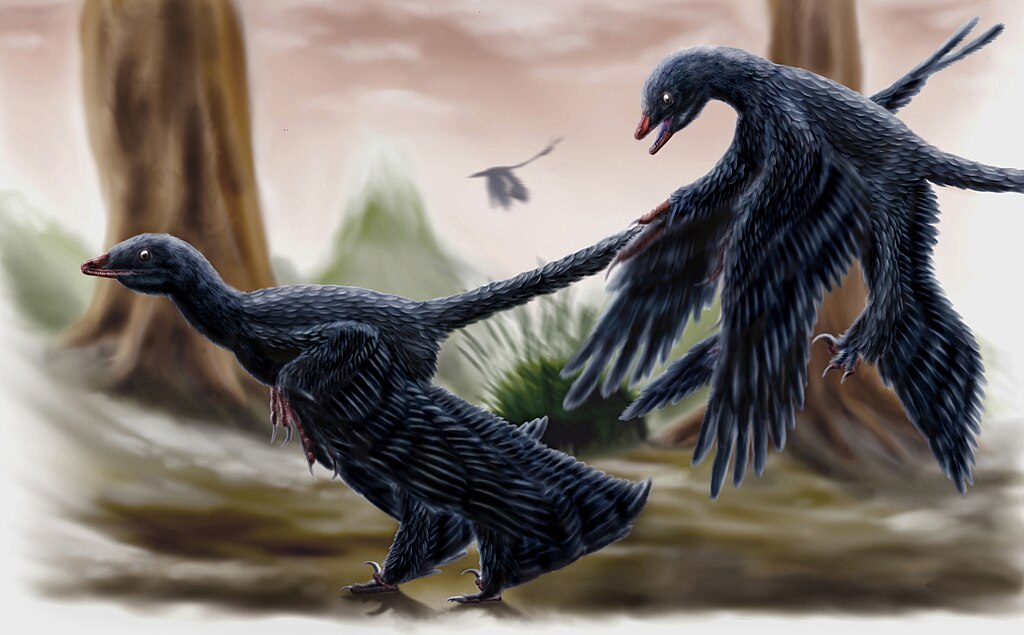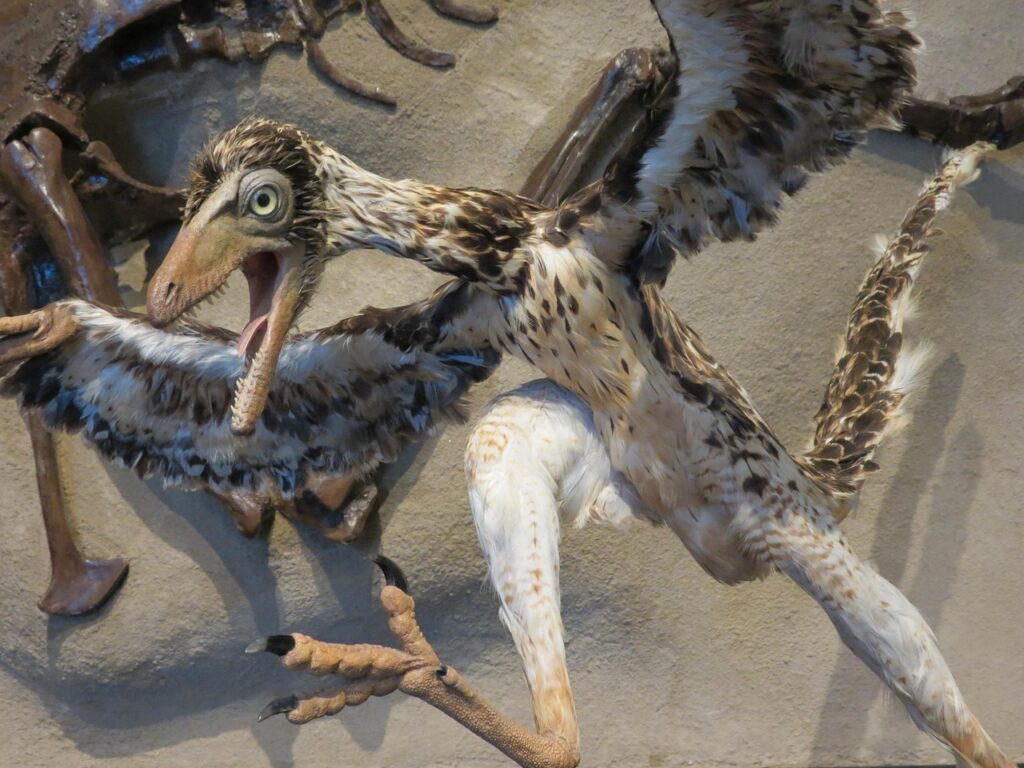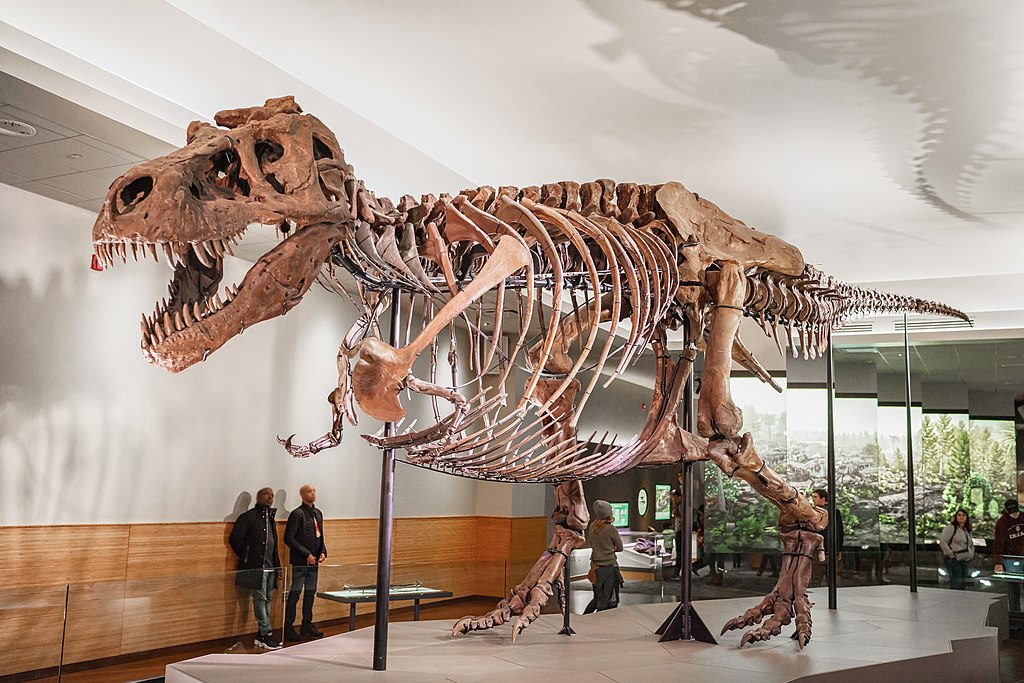Deep in the fossil records of northeastern China lies evidence of one of evolution’s most fascinating experiments: a four-winged dinosaur that may represent nature’s early attempt at powered flight. These remarkable creatures, belonging primarily to the Microraptor genus, lived approximately 125-120 million years ago during the Early Cretaceous period. Their discovery has revolutionized our understanding of the evolutionary pathway to flight and challenged long-held theories about avian origins. With feathered forelimbs and hindlimbs arranged in a biplane-like configuration, these dinosaurs offer a tantalizing glimpse into an evolutionary road that nature explored before settling on the body plan we see in modern birds. Their story is one of innovation, adaptation, and the complex journey from ground to sky.
The Remarkable Discovery of Microraptor

The scientific community was stunned in 2000 when paleontologists in China’s Liaoning Province unearthed the first complete specimen of Microraptor, the most well-known four-winged dinosaur. This remarkable fossil came from the famed Jehol Biota, a fossil site renowned for its exceptional preservation of soft tissues, including feathers. The discovery was revolutionary because it preserved not only the skeleton in articulation but also the unmistakable impression of feathers on both the fore and hind limbs. Professor Xu Xing of the Institute of Vertebrate Paleontology and Paleoanthropology in Beijing led the team that made this groundbreaking find. Multiple specimens have since been discovered, allowing scientists to study these creatures from various angles and with increasing confidence about their anatomical features. The exceptional preservation quality of these fossils has provided unprecedented insight into the early evolution of feathered flight.
Anatomy of a Four-Winged Wonder

Microraptor was a small dinosaur, measuring approximately 77-90 centimeters (2.5-3 feet) in length and weighing only 1 kilogram (2.2 pounds). Its most distinctive feature was the presence of long, asymmetrical flight feathers on both its arms and legs, creating four wing-like surfaces. These pennaceous feathers were remarkably similar to those of modern flying birds, with a central shaft and interlocking barbs that created an aerodynamic surface. The dinosaur possessed a long, stiff tail that ended in a diamond-shaped array of feathers that likely functioned as a stabilizer during aerial locomotion. Microraptor’s skeleton was lightweight and bird-like, with hollow bones that would have reduced its body weight. Its skull was relatively small and contained numerous small, serrated teeth, indicating it was a predator. This anatomical arrangement created a body plan unlike any living creature today—a genuine evolutionary experiment.
The Evolutionary Significance of Four Wings

The four-winged configuration of Microraptor represents a crucial transitional stage in the evolution of flight, challenging the traditional linear model of ground-up evolution. For decades, scientists debated whether birds evolved flight by running along the ground and eventually taking off (the “ground-up” theory) or by gliding from trees (the “trees-down” theory). Microraptor provides compelling evidence for the trees-down hypothesis, suggesting that flight may have evolved through an intermediate gliding phase. The dinosaur’s four-winged arrangement reveals that evolution experimented with multiple wing surfaces before settling on the two-winged body plan we see in modern birds. Some paleontologists suggest that the hind wings were later reduced and their flight functions consolidated into the forelimbs, allowing the hindlimbs to specialize for perching and terrestrial locomotion. This mosaic of features exemplifies how evolution often works through experimentation rather than in a direct, linear fashion.
Flying Like a Biplane: Microraptor’s Aerial Capabilities
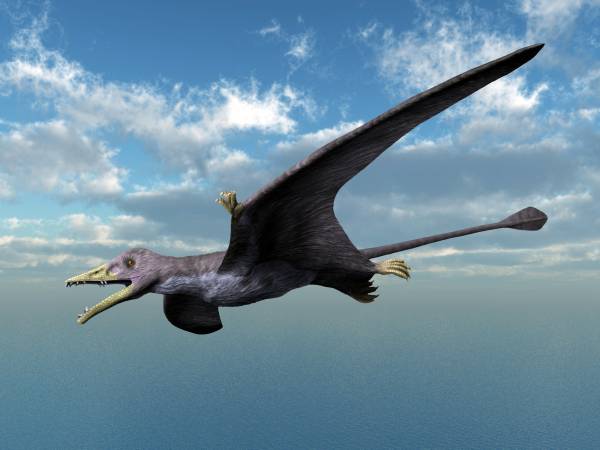
Scientists have conducted extensive studies to understand how Microraptor might have moved through the air, with fascinating results suggesting a biplane-like configuration. Wind tunnel tests and computer simulations indicate that Microraptor was likely capable of controlled gliding, using its four wings to generate lift and maintain stability. The hindlimb wings were probably held below and behind the forelimb wings, creating a staggered biplane arrangement that would have provided good gliding performance. This configuration would have allowed for relatively slow descent rates and considerable gliding distance. Some research suggests that Microraptor may have been capable of some form of powered flight, though it was almost certainly less efficient than modern birds. The dinosaur likely launched from elevated positions in trees, using gravity to initiate its aerial journeys. This unique flight strategy represents an evolutionary pathway that nature ultimately abandoned in favor of the more efficient two-winged design seen in birds today.
Microraptor’s Ecological Niche

The forests of Early Cretaceous China where Microraptor lived were dense, humid environments teeming with diverse flora and fauna. Analysis of Microraptor specimens has revealed remarkable insights into its lifestyle and ecological role in this ancient ecosystem. Stomach contents preserved in some fossils indicate that Microraptor was a carnivore that consumed small mammals, birds, fish, and lizards. This dietary diversity suggests it was an opportunistic predator that hunted across different habitats. The creature’s anatomy suggests it was primarily arboreal, using its clawed feet to climb trees and its wings to glide between them. This tree-dwelling lifestyle would have allowed Microraptor to access food sources unavailable to ground-dwelling dinosaurs and to escape larger predators. Evidence of iridescent plumage further indicates that visual display may have played an important role in Microraptor’s behavior, possibly related to territorial disputes or mating rituals. These ecological insights paint a picture of a versatile predator that exploited its unique gliding ability to thrive in a competitive ecosystem.
Beyond Microraptor: Other Four-Winged Dinosaurs

While Microraptor is the most famous four-winged dinosaur, paleontologists have discovered several other related species that shared similar characteristics. Anchiornis huxleyi, slightly older than Microraptor at approximately 160 million years old, also possessed four wings and provides evidence that this body plan evolved earlier than previously thought. Another notable example is Changyuraptor yangi, which at approximately 4 feet long was substantially larger than Microraptor but maintained the four-winged configuration. Yi qi represents perhaps the most unusual variation, combining feathered wings with a bat-like membrane supported by an elongated wrist bone—a truly experimental design in flight evolution. Aurornis and Xiaotingia are additional examples of dinosaurs that possessed feathers on both their fore and hind limbs. This diversity of four-winged dinosaurs demonstrates that this body plan was not merely an evolutionary one-off but rather a successful adaptation that persisted for millions of years across multiple lineages. The wide range of these discoveries suggests that the Early Cretaceous period was a time of significant experimentation in flight strategies.
The Color of Prehistoric Wings
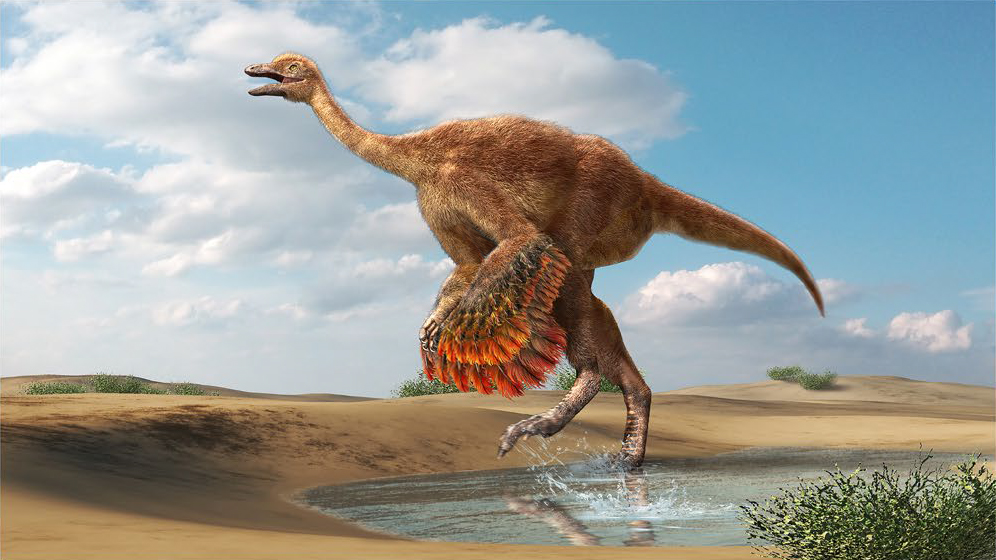
In a groundbreaking scientific achievement, researchers have been able to determine the actual coloration of Microraptor’s feathers through microscopic analysis of preserved melanosomes—tiny organelles that contain pigment. Studies published in 2012 revealed that Microraptor possessed iridescent black plumage similar to that of modern crows and ravens. This iridescence would have created a glossy blue or purple sheen when light struck the feathers at certain angles. The discovery marks one of the first times scientists have been able to accurately determine the color of a dinosaur, moving beyond artistic speculation to evidence-based reconstruction. This black coloration may have served multiple purposes, from providing camouflage in a forest environment to thermoregulation or social signaling during mating displays. The presence of iridescent plumage also suggests that visual communication played an important role in Microraptor’s behavior, much as it does in modern birds. This remarkable preservation of color information bridges the gap between fossilized remains and the living, breathing animals that once inhabited our planet.
The Evolutionary Link to Modern Birds
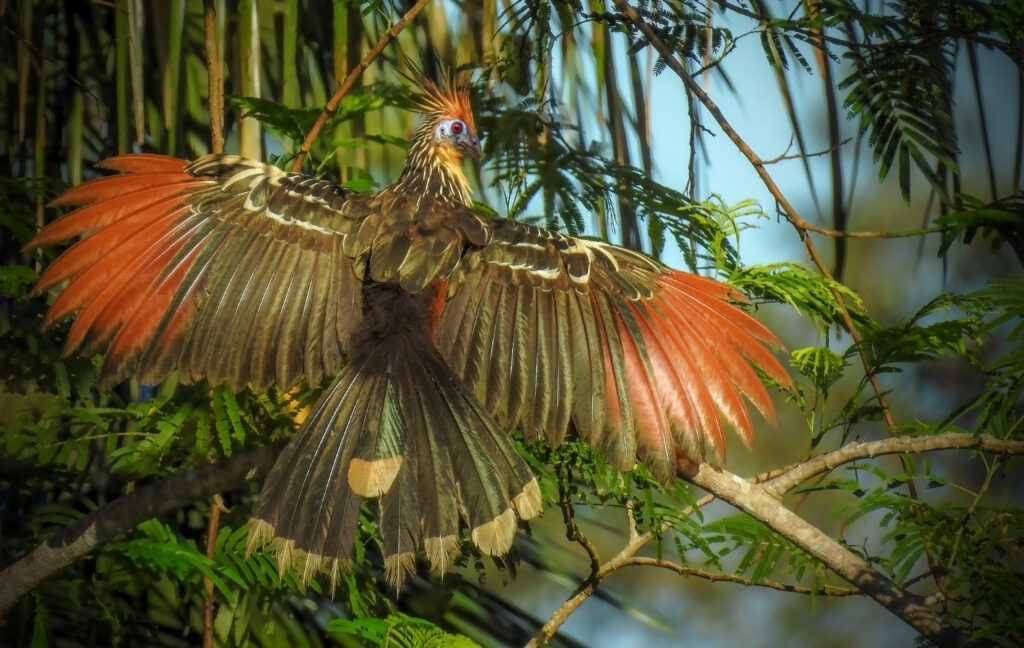
Microraptor and other four-winged dinosaurs occupy a critical position in the evolutionary transition from dinosaurs to birds, helping to illuminate this remarkable transformation. These creatures belonged to the Dromaeosauridae family, closely related to the ancestors of modern birds. The presence of true, asymmetrical flight feathers—identical in structure to those of modern birds—demonstrates that many features once thought unique to birds had already evolved in their dinosaurian ancestors. Microraptor’s small size, lightweight skeleton, and advanced feathers all represent bird-like adaptations that preceded the origin of birds themselves. The transition from four wings to two represents one of the final major anatomical shifts in the dinosaur-bird transition. Modern birds retain remnants of their four-winged ancestry in their development; chicken embryos initially grow leg feathers that are later suppressed by Hox genes—genetic switches that control body patterning. This developmental phenomenon, where an ancestral trait appears briefly during growth before disappearing, provides further evidence of birds’ four-winged ancestry. The evolutionary story written in Microraptor’s bones and feathers continues to deepen our understanding of how dinosaurs took to the sky.
Controversies and Competing Theories
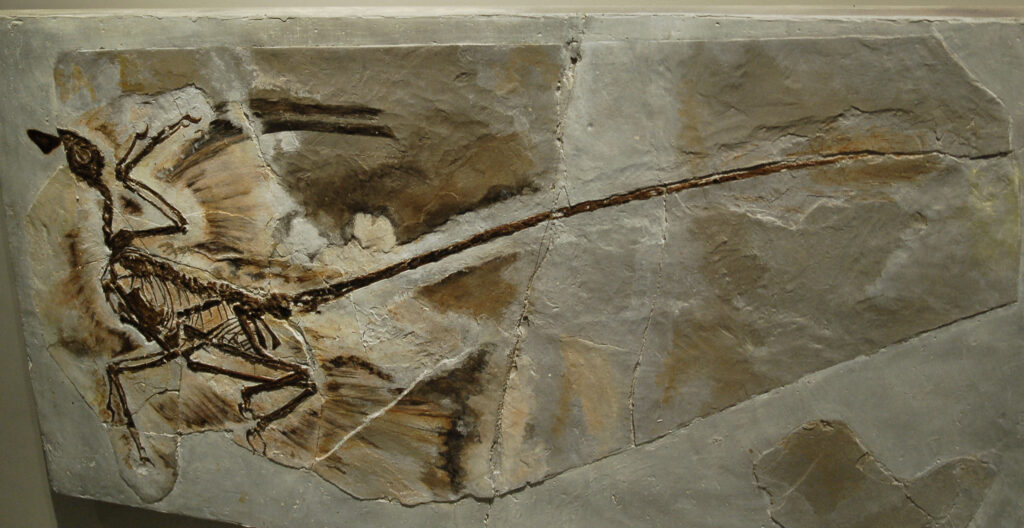
Despite the wealth of information provided by Microraptor fossils, significant scientific debates persist about these creatures and their significance. Some researchers question whether the hindlimb feathers were truly used for flight or instead served other functions such as display or insulation. Critics of the biplane model have proposed alternative configurations, including suggestions that the hindlimbs were held out to the sides or tucked beneath the body during gliding. Other controversies center on whether Microraptor represents a direct ancestor of birds or instead a specialized side branch—a cousin rather than a parent of the bird family tree. The discovery of seemingly advanced flight features in a dinosaur that lived after the earliest known bird, Archaeopteryx, complicates the traditional view of a straightforward evolutionary progression. Some paleontologists even suggest that flight may have evolved multiple times among dinosaurs, with Microraptor representing one of several experiments in aerial locomotion. These ongoing debates highlight how fossil discoveries often raise as many questions as they answer and demonstrate the dynamic nature of paleontological research.
Reconstructing Prehistoric Flight

Scientists have employed a variety of innovative methods to understand how Microraptor might have moved through the air. Detailed analysis of leg joint anatomy suggests these dinosaurs could not have spread their legs sideways in a “spread-eagle” position as initially hypothesized, leading to revised models of their flight posture. Wind tunnel experiments using physical models have provided data on lift, drag, and stability during simulated glides. Computer simulations incorporating feather structure, body mass, and aerodynamic principles have allowed researchers to visualize Microraptor’s likely flight path and capabilities. Some studies have included robotic replicas with adjustable wing configurations to test different flight scenarios under controlled conditions. The mounting evidence indicates Microraptor was an efficient glider capable of traveling significant distances between trees with minimal loss of height. These reconstructions help bring ancient behaviors to life, transforming static fossils into dynamic creatures navigating their prehistoric environment. The methods developed to study Microraptor’s flight have broader applications for understanding the biomechanics of other extinct animals and the evolution of complex behaviors.
The Jehol Biota: Preservation of an Ancient Ecosystem

The exceptional preservation of Microraptor and other four-winged dinosaurs is largely due to the unique conditions of the Jehol Biota in northeastern China, one of the most important fossil sites in the world. This ancient ecosystem was periodically devastated by volcanic eruptions that instantly killed and buried organisms in fine ash, creating perfect conditions for fossilization. The fine-grained sedimentary deposits preserved not just bones but also soft tissues, feathers, stomach contents, and even color-producing structures. This remarkable fossil lagerstätte (a sedimentary deposit with exceptional fossil preservation) spans the Late Jurassic to Early Cretaceous periods, approximately 160-120 million years ago. The Jehol Biota has yielded thousands of spectacularly preserved specimens, including numerous feathered dinosaurs, early birds, mammals, amphibians, fish, insects, and plants. This comprehensive snapshot of an ancient ecosystem provides unprecedented context for understanding how Microraptor lived and interacted with its environment. The volcanic catastrophes that repeatedly struck this region, while devastating for the creatures living there, created an incomparable window into the distant past for modern scientists.
From Four Wings to Two: Why Birds Abandoned the Biplane Design
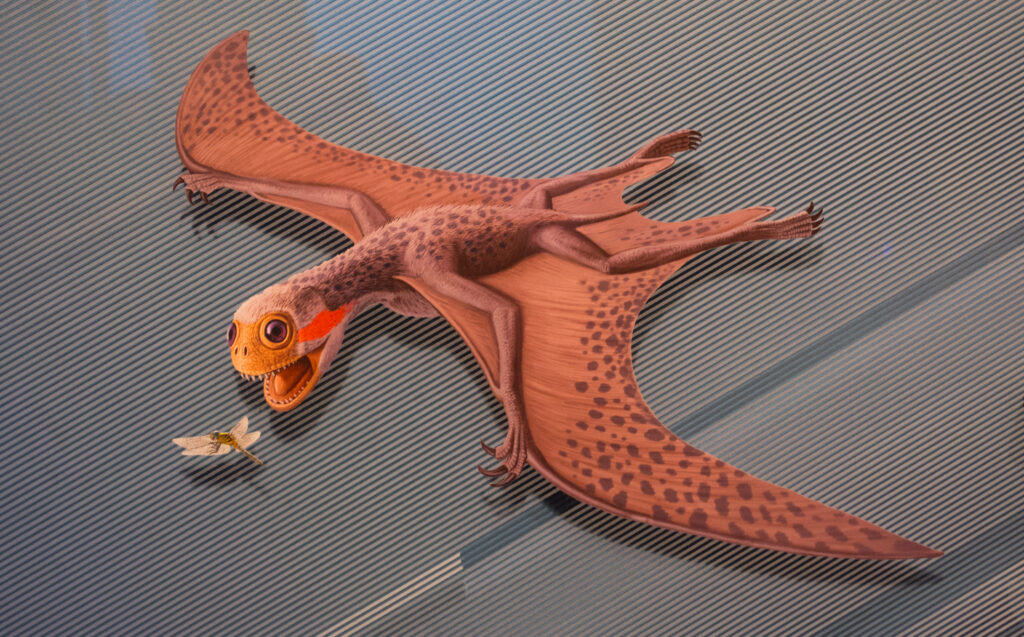
The transition from four wings to the two-winged configuration of modern birds represents a fascinating case study in evolutionary optimization. While the four-winged design of Microraptor offered certain advantages for gliding, it likely imposed significant limitations on terrestrial movement. The long flight feathers on the hindlimbs would have restricted leg extension and created drag during running, compromising the animal’s ability to move efficiently on the ground. As flight capabilities evolved to include more active, powered flight rather than just gliding, the aerodynamic advantages of concentrating flight surfaces on the forelimbs apparently outweighed the benefits of the four-winged arrangement. Modern birds achieve greater flight efficiency through their two-wing design, which allows for more specialized and powerful flight muscles concentrated in the chest. The transition freed the hindlimbs to specialize for perching, walking, swimming, or hunting, enabling birds to exploit diverse ecological niches. This evolutionary shift demonstrates natural selection’s tendency to favor specialization of anatomical structures over generalized designs, particularly when competing demands place constraints on multi-purpose anatomy. The two-winged configuration ultimately proved more adaptable across varied environments and lifestyles.
The Future of Four-Winged Dinosaur Research
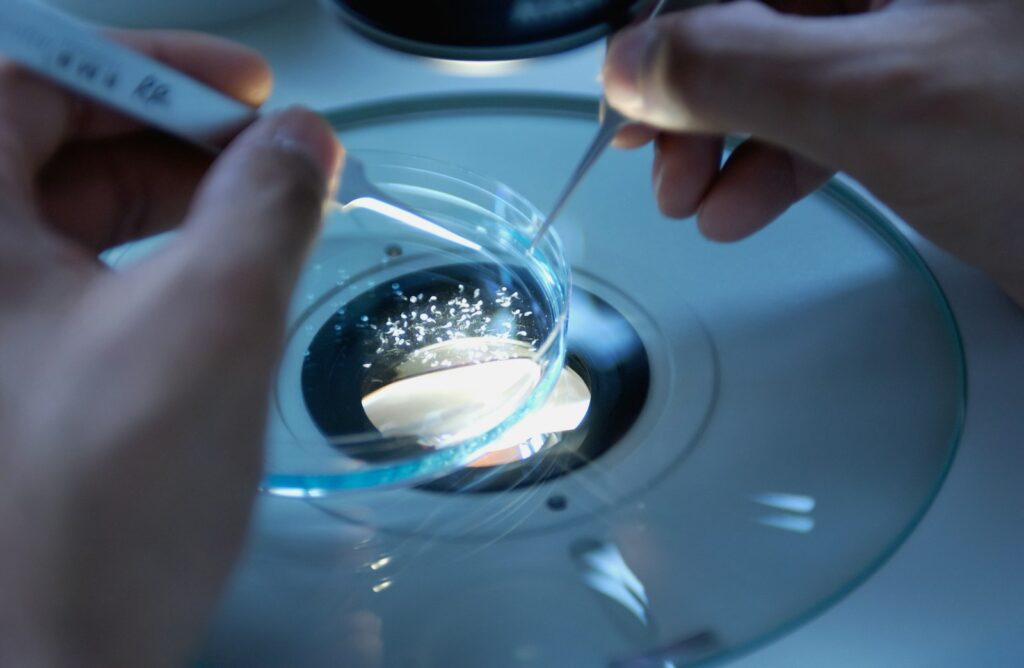
Research into four-winged dinosaurs continues to advance rapidly, with new discoveries and analytical techniques promising to resolve lingering questions. Advanced imaging technologies like synchrotron radiation and laser-stimulated fluorescence are revealing previously invisible details in existing fossils, including soft tissue structures and feather attachments. Improved computational models incorporating cutting-edge aerodynamic principles are providing more accurate simulations of these creatures’ flight capabilities. Developmental biologists are investigating the genetic mechanisms that control limb and feather development in modern birds, seeking clues to how four-winged anatomy evolved and was subsequently modified. Ongoing fieldwork in China and other regions holds the promise of discovering new species that might fill gaps in our understanding of the transition from four wings to two. Interdisciplinary collaboration between paleontologists, aerodynamic engineers, geneticists, and developmental biologists is increasingly common, bringing diverse perspectives to bear on these fascinating creatures. The study of four-winged dinosaurs exemplifies modern paleontology’s transformation from a primarily descriptive science to one that integrates multiple scientific disciplines to understand ancient life and its evolutionary significance.
Conclusion

The story of four-winged dinosaurs like Microraptor illuminates one of evolution’s most fascinating experiments—a path briefly taken before nature settled on the two-winged design that would eventually conquer the skies. These remarkable creatures, neither fully dinosaur nor fully bird, occupied a unique evolutionary moment when the blueprint for avian flight was still being drafted. Their fossils serve as snapshots of evolution in progress, revealing that the journey from ground to sky was neither straightforward nor inevitable. As we continue to unearth and analyze these ancient remains, we gain not just knowledge about these particular animals, but deeper insight into evolutionary processes themselves—how nature tests variations, refines designs, and occasionally abandons apparently promising adaptations. The four-winged dinosaurs remind us that evolution’s path is rarely direct, but rather a complex journey of experimentation that has produced the remarkable diversity of life we see today.

